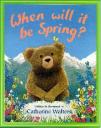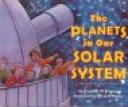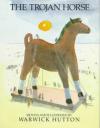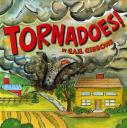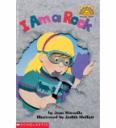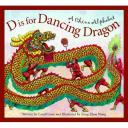When Will It Be Spring?, written and illustrated by Catherine Walters is a story of a young cub, Alfie, that is in hibernation with Mother Bear. He is so excited for spring that he does not sleep, instead he keeps asking his mother how he will know when it is spring. She describes to the young cub what to expect from the season, for example, “when the butterflies float by looking for new flowers, then it will be spring”, and orders him to go back to sleep. Alfie continues to misinterpret the winter patterns until Spring finally arrives.
Curriculum Connections
This book can assist teachers with the introduction of understanding basic patterns and cycles that occur in nature and how those patterns such as seasonal changes affect animal’s behavior and life cycles (SOL 2.7a, 3.8a,b). Another way this book can assist teachers is by starting discussions about how adaptations allow animals to respond to their environment, specifically hibernation (SOL 3.4a,b). Lastly, this book is a great example of how natural events are sequenced chronologically (SOL 3.1d).
Additional Resources
- Worksheet that states what animals do during the different seasons. The student must match which animal belongs with which characteristic.
- “A Black Bear’s Year” activity is an interactive activity for the computer where there are eight sentences that describe the life of a black bear in every season. The student must drag the correct word to make the sentence correct.
- An interactive webpage that allows the student to move the cursor over the pictures of all four seasons. In each picture, descriptions pop up that give examples of how different animals are affected by that season.
Book: When Will It Be Spring?
Author: Catherine Walters
Illustrator: Catherine Walters
Publisher: Dutton Juvenile
Publication Date: 1998
Pages: 32
Grade Range: K-3
ISBN:0525458816

